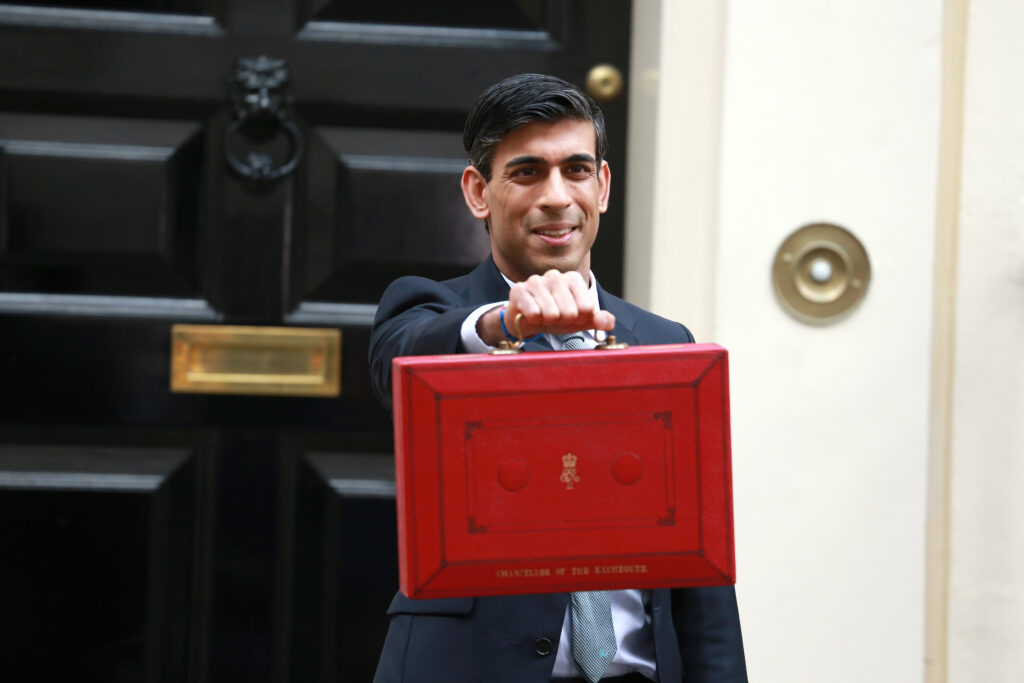On the eve of the chancellor’s spring statement SOSNHS campaigners handed in a petition with 177,000 signatures, demanding £20 billion emergency funding for the NHS, to Downing Street. Few of them would have realistically expected they would get even small change out of Rishi Sunak: and his statement fully confirmed the most pessimistic expectations.
The statement brought no improvement on what many already see as the wholly inadequate increases in spending – set out in the so-called “health and care levy”, and last autumn’s spending review. The Institute of Fiscal Studies has warned that because of soaring inflation the extra funding now amounts to a real terms increase of just 3.6% per year until 2025 – nowhere near the level needed to fund a recovery from the impact of the Covid pandemic on NHS capacity and performance.
Worse still, the additional Covid funding for the NHS (£33.8 billion in 2021-22) comes to a halt at the beginning of April, despite almost 14,000 front line beds in England being filled with Covid patients (March 25).
Nor did either budget or spring statement recognise the need for increased capital spending to tackle the massive £9bn backlog of maintenance to NHS hospitals and equipment, or give any real hope that construction of the promised 48 “new hospitals” would even begin before the next election.
But the spring statement is only part of the bad news. Sunak’s statement had been preceded by the announcement over the previous weekend that he was doubling the NHS’s annual savings target from 1.1% to 2.2%, in the hopes of delivering an annual saving of £4.75bn.
The HSJ had already been warning that many trusts were faced with daunting targets for so-called efficiency savings, with some expected somehow to save over 5% of their budget in 2022-23. This is a level never previously achieved – except perhaps in the spending cuts of £10m in a year that triggered the scandalous collapse in care at Mid Staffordshire Hospitals in the mid 2000s.
The day after the spring statement NHS England’s Board was told by chief financial officer Julian Kelly that they had to cut core NHS funding by £500m in 2022-23, while rising inflation could add another £1bn in financial pressure. This meant they would “have to look at what that means for our ability to deliver NHS goals …”
So not only is there no light at the end of the tunnel for increasingly desperate NHS staff after two gruesome years coping with Covid (or for patients stuck on lengthening waiting lists for operations), but widespread deficits are likely to re-emerge in 2022-23.
The task of driving through this new, brutal, austerity which threatens the NHS with a second successive decade of decline, will fall to the Integrated Care Boards that will take on statutory powers from July, once the Health and Care Bill completes its passage through parliament.
Some Integrated Care Systems will no doubt resort to drastic measures as they try to reduce spending to hit budget targets, just as Clinical Commissioning Groups, Primary Care Trusts and Health Authorities have done before them.
But the new, less local, commissioning bodies may well run into conflict with major local acute trusts, which are also battling to balance their books. So the new system is certain to get off to a suitably bumpy start, with each decision potentially further highlighting the lack of local accountability in the new system.
____________________________________________________
NHS England plans – for private patients
It was bad enough that NHS England’s latest bi-monthly Board meeting showed no real reaction to the news of a further £1.5 billion of cuts and cash pressures: but we now know they are not even properly focused on the NHS at all.
The HSJ has revealed a leaked NHS England document that has been circulated inside the NHS since the end of last year which instructs local leaders to focus their energies not on reducing waiting lists and treating NHS patients, but instead to “actively explore and develop opportunities to grow their external (non-NHS) income.”
It goes on: “Private patient services continue to be a significant source of material opportunity in the NHS.” The document commits NHS England to work with trusts to “identify and scale-up NHS export opportunities and support development of private patient opportunities to generate revenue and provide benefits for NHS staff and local patients and services.”
Even the Daily Telegraph has headlined this story “Outrage as NHS hospitals told to target more private patients, despite record waiting list,” quoting cancer doctors stating the advice was “morally outrageous,” and noting new figures from the Private Healthcare Information Network showing “a near-tripling in the number of self-funded hip operations since the pandemic.”
Large queues and long delays actually help NHS England’s plans to turn the NHS itself into a two-tier system, driving more desperate patients to seek private treatment. The conflict of interest exposed by this document means that at least the NHS England staff who drew up the leaked document should resign or be sacked – and the Board, which appears to be incapable of any action to address the growing crisis of the NHS should also be replaced
Dear Reader,
If you like our content please support our campaigning journalism to protect health care for all.
Our goal is to inform people, hold our politicians to account and help to build change through evidence based ideas.
Everyone should have access to comprehensive healthcare, but our NHS needs support. You can help us to continue to counter bad policy, battle neglect of the NHS and correct dangerous mis-infomation.
Supporters of the NHS are crucial in sustaining our health service and with your help we will be able to engage more people in securing its future.
Please donate to help support our campaigning NHS research and journalism.


